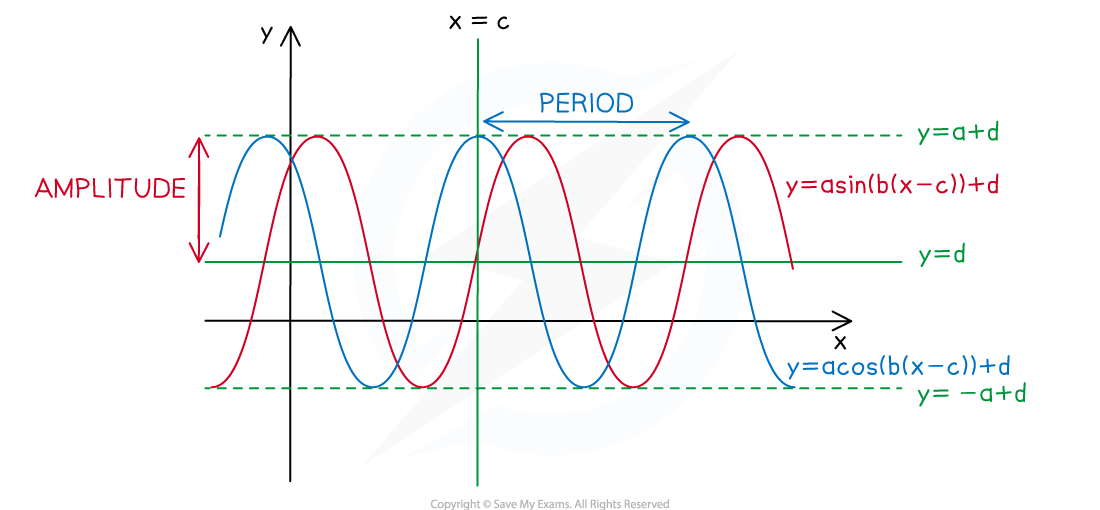Modelling with Trigonometric Functions
What can be modelled with trigonometric functions?
- Anything that oscillates (fluctuates periodically) can be modelled using a trigonometric function
- Normally some transformation of the sine or cosine function
- Examples include:
is the depth of water at a shore t hours after midnight
is the temperature of a city d days after the 1st January
is vertical height above ground of a person t seconds after entering a Ferris wheel
- Notice that the x-axis will not always contain an angle
- In the examples above time or number of days would be on the x-axis
- Depth of the water, temperature or vertical height would be on the y-axis
What are the parameters of trigonometric models?
- A trigonometric model could be of the form
- The a represents the amplitude of the function
- The bigger the value of a the bigger the range of values of the function
- For the function
the amplitude is undefined
- The b determines the period of the function
- Period
- The bigger the value of b the quicker the function repeats a cycle
- Period
- The c represents the horizontal shift
- The d represents the vertical shift
- This is the principal axis
What are possible limitations of a trigonometric model?
- The amplitude is the same for each cycle
- In real-life this might not be the case
- The function might get closer to the value of d over time
- The period is the same for each cycle
- In real-life this might not be the case
- The time to complete a cycle might change over time

Exam Tip
- The variable in these questions is often t for time.
- Read the question carefully to make sure you know what you are being asked to solve.
Worked Example
The water depth, D, in metres, at a port can be modelled by the function
where t is the elapsed time, in hours, since midnight.
a)
Write down the depth of the water at midnight.

b)
Find the minimum water depth and the number of hours after midnight that this depth occurs.

c)
Calculate how long the water depth is at least 13.5 m each day.

